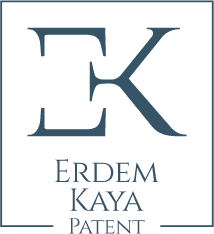As I have consistently emphasized, Intellectual Property Rights (IPRs) are among the most valuable assets of organizations. However, to effectively leverage these valuable instruments, it is essential to cultivate a culture of strategic intellectual property management.
Below are the key headings for strategic intellectual property management:
Cultivation of Culture:
Under this heading, the aim is to spread the culture of Intellectual Property Rights within the organization through layered training programs. Initially, basic awareness training should ideally cover all units within the organization. Subsequently, more in-depth training can be provided, especially to the R&D department, and one or more individuals from this department can participate in specialized additional training programs at an expertise level.
Establishment of Systems:
This heading involves creating written procedures for managing Intellectual Property Rights within the organization, primarily including system documents (such as claim forms and invention disclosure forms) used in these procedures.
Evaluation:
Under this heading, ideally, an Intellectual Property Rights Evaluation Committee (IPREC) is established, comprising individuals from different disciplines with predetermined roles and responsibilities. This committee reviews or commissions reviews on all ideas coming to the organization from inside or outside, examining issues such as which intellectual property instrument can protect them, whether they align with the organization’s strategic goals, and the potential for registration and/or commercialization. Based on these evaluations, ownership or other relevant decisions are made.
Inventory Creation:
Under this heading, once approved by the IPREC, a well-structured registration or registration strategy is initiated for protection. As additional information, industrial property instruments such as trademarks, patents, or designs are subject to registration procedures at official institutions such as TÜRKPATENT, while documents containing know-how, software codes, or works of copyright or intellectual property nature can be officially recorded with various registration systems (notary, timestamp, optional registration).
Portfolio Management:
Especially after the number of intellectual property rights owned by the organization increases, careful management of this portfolio is necessary. This management includes fulfilling official deadlines and requirements for the continuation of rights, categorizing the portfolio (by purpose, importance level, commercialization status), budget management, and making decisions on rights forfeiture when necessary.
Utilization:
If you think Intellectual Property Rights are just a piece of paper, you may not see the potential in your hands. However, with legal and ethical boundaries always in mind, you can use these valuable assets to achieve significant advantages in the market, such as perception management, reputation management, sending signals to competitors, defending against legal attacks, and uncompromisingly combating imitations.
Valuation:
Especially in cases such as the sale of company shares, public offerings, or the leasing/sale of an intellectual property right to a third party, it is necessary to value intellectual property rights using appropriate methods such as cost, income, or market-based valuation methods. Valued Intellectual Property Rights can also be presented to investors for informational purposes in places like footnotes or supplementary accounts in balance sheets.
Creating Synergy:
To derive more benefits from the Intellectual Property portfolio beyond legal protection and deterrence, considerations should be given to applications such as tax exemptions based on patents, incentive-support opportunities related to Intellectual Property Rights, licensing opportunities, and technology collaboration opportunities through patents.
Coordination with Overall Strategy:
The Intellectual Property Strategy must align with the business strategy determined by the organization’s top management and the expectations of customers in the market where the organization is active. For example, if a company’s budget is limited, it is much more logical to create a patent family that protects all different solution methods that enable the customer to benefit directly, rather than obtaining dozens of patents for technical matters that are excellent engineering works but not directly felt by the customer.
Throughout all these processes, which require deep expertise and a multidisciplinary approach, it is also crucial to work with a competent patent consultancy firm that can effectively accompany and guide you with its experience. When selecting such a consultant, I strongly advise approaching the matter not solely from a cost perspective but with the same level of sensitivity you would apply when choosing your doctor, lawyer, or financial advisor.
I have tried to briefly outline the main framework of a topic that could easily fill a thick book. I hope I have provided useful information.
Best regards.
Erdem Kaya






